- Home
- Ron Foster
Sharecropping The Apocalypse: A Prepper is Cast Adrift Page 14
Sharecropping The Apocalypse: A Prepper is Cast Adrift Read online
Page 14
“Ignorance is bliss?” David offered remembering he had just played music CDs once in awhile on his laptop and chattered about all sorts of things with Julie as they spent the first few powerless days.
“Not in this case. Ignorance is awful! Why is it that that you think Crick wants you to go to his house David? Better yet, have you got any notion of actually going there?” Julie demanded stressing on too many things at once.
“That is what we are figuring out Darling. I think I might have an inkling of the answer. You know last Prepper Stock I had a conversation with a lot of people around there about what resources I thought it might take to feed that many people for a short period and what everyone might need in the way of resources if a community actually could survive there. I bet Crick wants my fish nets and a Trotline or two. Not the easiest items to find in a disaster if you wanted some. Without a net of some kind those survivors’ chances get greatly reduced. Probably a few more things he might want me to bring I haven’t thought about yet would be good. Damn it I wish the phones would start working.” David said and checked the phone for the umpteenth time to no avail.
“That sounds logical. I wonder if they plan on living on that island short or long term. There were lots of folks from Alabama represented there at last Prepper Stock that might be able to bug home if they got off the island, do you think he wanted you to play shuttle service for some of them?” Julie asked examining the problem further.
“Time will tell darling, Time will tell. Let’s go get a drink and hash out the pros and cons of leaving here on a few days trip.” David said thinking he liked a chaser with his bad news.
“Sounds like a fine idea to me, I think I can use more than one also about now. David we had better be listening closely to the radio and finding out how the travel restrictions are going to affect us should you start thinking about going anywhere.” Julie reminded him while getting real apprehensive about the fact that David had not brought up anything yet about the possibility of them not going on a mission to Crick’s place. What about all their stuff? What about the gas it was going to take? These questions and a million others flooded her mind.
“I agree, I already got an idea that might work for us to get around that travel restriction thing. I am going to see if Clancy will lend me that old tractor of his with my Van for collateral to take up there and back. I admit a van with barely any fuel in it isn’t much collateral but I will sweeten the deal someway. You see if I am driving a tractor pulling a trailer say with a tarped down hay bail or two on it, well then if any official inquires I can always say I was just going down the road to some farm somewhere and not look like I was fleeing a disaster.” David said looking very smug.
The End
Book one of a prepper is cast adrift.
INDEX
I Living Off The Land: Delusions and Misconceptions About Hunting and Gathering
Ah, living off the land. Thriving in the wilderness with the use of your skills. It is the ultimate goal of many bushcrafters and survivalists. Numerous posts have been written on forums about this subject, and as soon as one ends, another is started. Of course, actual evidence is rarely presented. We often fall back on positions such as “our ancestors did it, so clearly I can do it”, or “I was out last week and saw a bunch of cattails and barriers, so my food sources are secure”.
The problem is not made any better by so called experts in the field, who fuel the myth that they are feeding themselves in the wilderness. I vividly remember watching Andrew Price, host of A-Z of Bushcraft in one of the episodes, waking up in the morning, walking a few feet next to camp, gathering a few berries, and then turning the camera and saying “breakfast is served”. Ray Mears, aside from his excellent series, Wild Foods, has numerous instances where he gathers meager resources and then implies that his food requirements have been met. Of course, none of them ever bother to calculate or present actual caloric values, or discuss the long terms consequences. Similarly, people like Dave Canterbury, who discusses at length hunting in wilderness living conditions, never actually do the math of how much game has to be killed to justify the weight of that shotgun being carried, or whether the numbers would work out at all.
For the past year I have been attempting to gather some actual numbers on the subject, so we can have a more meaningful conversation about what it would take to sustainably feed a person in the wilderness, and consequently, what tools may be suited for the task. I must admit, I have been slacking with the project because of its tedious nature. Last week however, a reader referred me to a source related to the Chris McCandless post, which provided me with some of the information I was searching.
Samuel Thayer, author of the books Forager’s Harvest and Nature’s Garden, wrote an essay related to the starvation of Chris McCandles titles Into the Wild and other Poisonous Plant Fables. While much of the essay focuses on disproving theories of poisonous plants, the last section discusses actual caloric requirements for a person living in the wilderness, and what resources that would require.
So, let’s assume a scenario where a person will be going into the wilderness with the intention of living off the land. He will practice wilderness self reliance, he will thrive in nature, and whatever other cliché you want to insert here. Let’s also assume for the moment that there are no hunting or fishing regulations that we have to comply with, and let’s assume that the person has all necessary equipment, including hunting and fishing tools. What would the person need to procure each day in order to live in a sustainable manner for a prolonged period of time?
Well, the first piece of the puzzle is the required calories. Citing Michele Grodner’s Foundations and Clinical Applications of Nutrition, Thayer calculates that a male who is physically active under wilderness living conditions would need approximately 3,300 calories per day. This number seems consistent with calculations done by long distance backpackers, who usually aim for a bit over 3,000 calories per day. So, to maintain one’s physical condition, and prevent weight loss, the person in question must consume about 3,300 calories each day. Of course, there are other nutritional requirements, but at a very basic level, to prevent death from starvation in the long run, this caloric minimum must be met.
The above caloric requirement for wilderness living should not be confused with accounts of short term survival, where a person stays in the wilderness, slowly losing body weight, until they are rescued. We have plenty examples like this from series like Survivorman, Naked and Afraid, etc. Those are not examples of sustainable hunting and gathering situations, and we should not have any delusions about the long term applications of such a starvation diet.
So, sticking with the 3,300 caloric requirement per day, what would it take to meet these caloric needs?
Sources of Calories
Meat
First let’s look at animal products, something to which I will jointly refer to in this post as “meat”, but should be understood to include both protein and fats. Meat can vary in caloric content anywhere from 40 calories per ounce for lean meat like squirrel and rabbit, all the way to 60 calories per ounce for very fatty meat like salmon. Using these numbers, we can roughly calculate the caloric value of each animal, and how much of it we would need to meet our daily caloric requirements.
Red Squirrel: as Thayer calculates, at an average of 2.8 ounces of meat per squirrel (Michele Grodner’s Foundations and Clinical Applications of Nutrition), it would take 25 squirrels per day to meet the caloric requirements, or if also eating the internal organs and brain, about 16 squirrels per day.
Rabbit: at about 16 ounces of meat per rabbit (Michele Grodner’s Foundations and Clinical Applications of Nutrition), you would need about 4 of them per day, or 3 if eating all of the organs and brain.
Salmon: assuming you are catching Sockeye salmon, they average 6 pounds (96 ounces) (Kenai Peninsula Borough Commercial Fishing Industry State Records, 2012). Since salmon meat is rich in fat, we can assume 60 calories per ounce (USDA SR-21), which would
mean one salmon would give you 5,760 calories, or a little under two days of food.
Clams: clam meat varies in caloric density from about 33 calories per ounce to about 42 calories per ounce. (Interstate Shellfish Sanitation Conference, 2013). To satisfy the required 3,300 calories per day intake, you would need about 5 pounds of clam meat per day (using 40 calories per ounce for the calculation). In order to get 5 pounds of clam meat, you would need about 320 medium size clams. For each ounce of meat, you need about 4 medium size clams. (Interstate Shellfish Sanitation Conference, 2013)
Raccoon: while many people would not eat raccoon meat due to its high content of parasites, it is technically edible. The meat is fatty, averaging about 72 calories per ounce. (USDA SR-21) The weight of raccoons varies widely from 10 to 25 pounds for adults. The average listed size is about 25 pounds for an adult. That should provide approximately 10 pounds of meat once it is gutted, skinned and deboned. At 72 calories per ounce, such a raccoon will provide about 11,520 calories. However, keep in mind that these numbers reflect the calories if the animal is cooked to preserve all of its nutrients. In order to make it more palatable, people usually cook raccoon meat to remove most of the fat. If you do that, the caloric content will drop significantly. Assuming you save all of the fat however, a 25 pound raccoon should provide sufficient calories for 3.5 days.
Turkey: a good size turkey will yield about 10 pounds of meat (160 ounces) when processed. The caloric value of processed turkey meat is about 45 calories per ounce (USDA SR-21). Therefore, a turkey will produce 7,200 calories in total, or a bit more than 2 days worth of caloric requirements.
Deer: a mature buck typically yields about 70 pounds of meat (1,120 ounces) (University of Wisconsin study 2006). Venison is a lean meat, with about 53 calories per ounce (USDA SR-21). The meat of a mature buck will therefore give you 59,360 calories, which will be sufficient for 18 days of food at the 3,300 calories per day requirement. If you are eating the internal organs as well, that will probably get pushed to about 20-21 days of food.
Black Bear: a large black bear will produce about 100 pounds of meat (1,600 ounces) once processed. Bear meat has about 43 calories per ounce. (USDA SR-21) So, a large black bear will give about 68,800 calories total. That would be sufficient calories to satisfy the caloric intake for 21 days.
Meat
Type of Animal
oz of Meat/Animal
cal/oz of Meat
Total cal/Animal
Animals/Day
Squirrel
2.8
47
132
25 (16)
Rabbit
16.8
47
790
4 (3)
Salmon
96
60
5,760
0.57
Clams
0.25
40
10
320
Raccoon
160
72
11,520
0.29
Turkey
160
45
7,200
0.46
Deer
1,120
53
59,360
0.056 (0.05)
Black Bear
1,600
43
68,800
0.047
The table below gives a general summary of the results. The numbers you see in the last column for animals needed each day to meet the caloric requirement, the number in parenthesis represents what is needed if internal organs are preserved and eaten as well as the meat.
Plants
Now, let’s move to plant sources.
Cattail Roots: cattail roots, will yield about 8 calories per ounce (USDA SR-21; Revedin, A., et al. Thirty thousand-Year-Old Evidence of Plant Food Processing, 2010). This means that about 413 ounces or 26.5 pounds of cattail flour would be needed to meet that daily caloric requirements.
It should be noted (as pointed out by a reader in one of the comments) that Table 2 of the above study, Thirty thousand-Year-Old Evidence of Plant Food Processing, 2010 provides that cattail (Typha) rhyzome flour contains 266 kcal/100g, or 75 calories per ounce. That is much higher than the 8 cal/oz provided by the USDA and other sources. It appears the difference occurs because that table speaks of the caloric value of already processed and cooked flour. The article specifies that “The flour would have undergone a multistep processing involving root peeling, drying, and finally grinding using specific tools. After this, the flour needed to be cooked to obtain a suitable and digestible food.” Cattail rhyzome contains large portions that are inedible, such as the spongy layer covering the rhyzome as well as the fibers from which you have to remove the starch. As such, the numbers don’t appear to be contradictory. You may very well have a caloric value of 25 kcal/100g (8 cal/oz) for cattail root and 266 kcal/100g (75 cal/oz) for processed cattail root flour where the outer casing has been peeled, the fibers have been removed, and the resulting starch cooked. In the table here I have used the number for unprocessed cattail root, and the quantity you would need to get the necessary calories.
Parsnips and Similar Wild Roots: according to Thayer, at approximately 23 calories per ounce (Michele Grodner’s Foundations and Clinical Applications of Nutrition), about 9 pounds would be needed per day to meet the daily caloric requirement of 3,300 calories.
Blueberries: again, according to Thayer, at about 16 calories per ounce (Michele Grodner’s Foundations and Clinical Applications of Nutrition), you would need 13 pounds of blueberries per day to meet your caloric requirements.
Lingonberries: at about 5 calories per ounce (USDA SR-21), you would need about 41 pounds of lingonberries to meet your daily caloric requirement.
Acorns: once processed into a flour, after leaching out the tannic acid acorns will provide about 110 calories per ounce (USDA SR-21). That would mean that 30 ounces, or a little under 2 pounds of acorn flour would be needed per day to satisfy the caloric requirements.
Burdock Root: at about 20 calories per ounce (USDA SR-21), you would need about 165 ounces, or 10 pounds of unprocessed burdock root to meet your daily caloric requirements. If cooked, a large amount of the water removed, the pounds one needs to consume may be significantly reduced, but would still constitute more than what a person can eat in a day.
Plants
Type of Plant
cal/oz of Plant Material
Pounds Per Day Needed
Cattail Root (Unprocessed)
8
26.5
Parsnips
23
9
Blueberries
16
13
Lingonberries
5
41
Acorns (processed)
110
2
Burdock Root
20
10*
The above represent average numbers, both for the calories required per day, and the amount of food which must be consumed to provide those calories. Variations should be expected. Even so, it is evident that a person attempting to live alone off the land in the wilderness has a serious challenge on his hands. The amount of food required seems absurd, but as Thayer explains: “If this seems like a high volume of food, that’s because it is. We have sought, developed, cultivated, and become accustomed to calorie-dense foods for so long that most of us have never been without them. We’ve never had to eat food in volumes like this. When you realize that a stick of butter has as many calories as two and a half quarts of blueberries or seven pounds of broccoli, you can see why the innate human desire for calorie-rich, low-fiber food developed.”
Gathering
The gathering of food has become a great area of teaching for survival and bushcraft instructors. Unfortunately, much of the teachings create a false impression of what it actually takes to feed oneself through gathering of food in the wilderness. As Thayer also noted, many such instructors teach, or imply through t
heir representations that a very small amount of food is needed for a person to sustainably live in the wilderness. Whether the misrepresentations are intentional, or due to lack of knowledge is hard to say, but the results are the same-people fail to realize how much food must be gathered to sustain a person long term.
We have to make a clear distinction between “edible” plants and “food”. Just because something can be eaten, does not mean that it contributes to your caloric requirements in any meaningful way. Many staples of bushcraft teachings, such as dandelions provide virtually no caloric value. You can easily starve to death with a stomach full of such plants. In fact, it is not unlikely that a person may spend more energy gathering edible plants, than the calories he will get from consuming them. To effectively gather food in the wilderness, one has to know not only what is edible, but also what provides meaningful calories.
From the plants available and listed in the above chart, not surprisingly acorns provide the highest nutrition. I imagine it will be similar for other nuts because of the high oil content. If processed correctly, a person can certainly provide enough food for himself using acorn flour. The other plants that are readily available, including the all too popular cattail and burdock roots, are far less than ideal when it comes to providing sufficient calories for a person attempting long term living. Not only would it be difficult to supply yourself with enough of the plant, but consuming such large quantities would be impossible. We should also keep in mind that the plants I have listed here are the ones with relatively high caloric value.

 Spectre Island- Time Is Running Out!
Spectre Island- Time Is Running Out!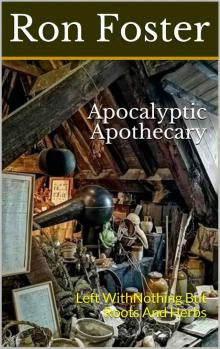 Apocalyptic Apothecary
Apocalyptic Apothecary Our End Of The Line
Our End Of The Line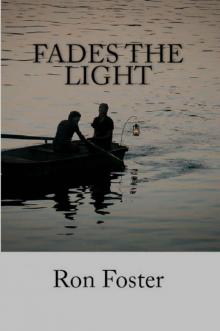 Fades The Light: The Prepper Reconstruction
Fades The Light: The Prepper Reconstruction Clem's Contrivance: Terrorist Fiction In The Deep South (The Apocalyptic Rifle Book 1)
Clem's Contrivance: Terrorist Fiction In The Deep South (The Apocalyptic Rifle Book 1) Diary Of A Kudzu Salesman: Survival And Recovery After The Electrical Grid Collapse (Prepper Reconstruction Book 2)
Diary Of A Kudzu Salesman: Survival And Recovery After The Electrical Grid Collapse (Prepper Reconstruction Book 2) The Ridiculously Simple Survival Book
The Ridiculously Simple Survival Book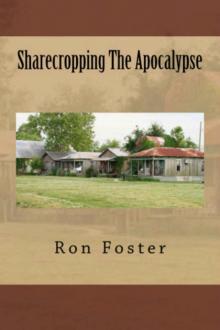 Sharecropping The Apocalypse: A Prepper is Cast Adrift
Sharecropping The Apocalypse: A Prepper is Cast Adrift The Savage Awakening (A preppers Perspective)
The Savage Awakening (A preppers Perspective) The Great Unraveling (A Preppers Perspective Book 1)
The Great Unraveling (A Preppers Perspective Book 1) An Old Man And His Axe: A Prepper fiction book of survival in an EMP grid down post apocalyptic world (Old Preppers Die Hard 1)
An Old Man And His Axe: A Prepper fiction book of survival in an EMP grid down post apocalyptic world (Old Preppers Die Hard 1) Shadows Of Sanity And Survival (Old Preppers Die Hard Book 3)
Shadows Of Sanity And Survival (Old Preppers Die Hard Book 3)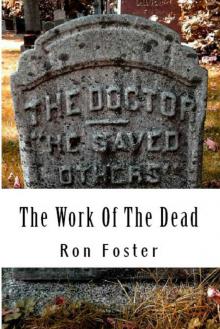 The Work Of The Dead: A Post Apocalyptic Prepper Fiction Series (Aftermath Survival Book 1)
The Work Of The Dead: A Post Apocalyptic Prepper Fiction Series (Aftermath Survival Book 1)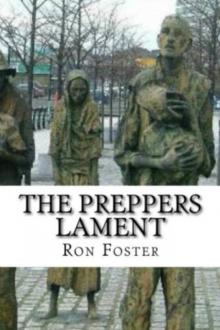 The Preppers Lament
The Preppers Lament Our End Of The Lake: Surviving After The 2012 Solar Storm (Prepper Trilogy)
Our End Of The Lake: Surviving After The 2012 Solar Storm (Prepper Trilogy) Beyond The Burning Shore: Searching For Survival
Beyond The Burning Shore: Searching For Survival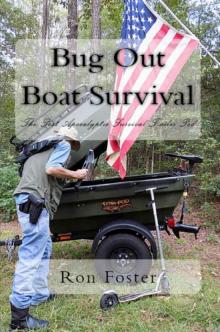 Bug Out Boat Survival: The Post Apocalyptic Survival Trailer Pod (Aftermath Survival Book 3)
Bug Out Boat Survival: The Post Apocalyptic Survival Trailer Pod (Aftermath Survival Book 3)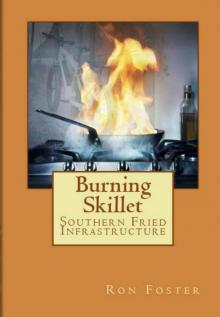 Burning Skillet: Southern Fried Infrastructure (Grid Down Prepper Up Book 2)
Burning Skillet: Southern Fried Infrastructure (Grid Down Prepper Up Book 2) The Solitary Man’s Refuge
The Solitary Man’s Refuge A Pox Upon Us
A Pox Upon Us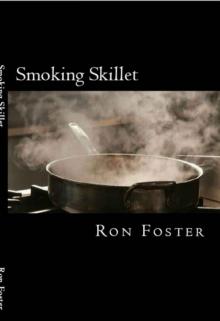 Smoking Skillet
Smoking Skillet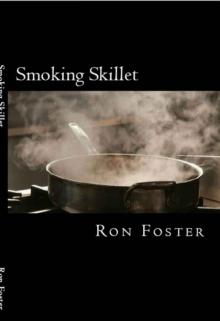 Smoking Skillet: A Recipe For Societal Collapse
Smoking Skillet: A Recipe For Societal Collapse Empty Aisles & Empty Hearts (Preppers Perspective Book 3)
Empty Aisles & Empty Hearts (Preppers Perspective Book 3)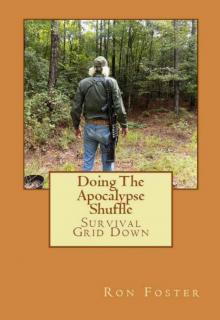 Doing The Apocalypse Shuffle: Southern Prepper Adventure Fiction of Survival Grid Down (Old Preppers Die Hard Book 2)
Doing The Apocalypse Shuffle: Southern Prepper Adventure Fiction of Survival Grid Down (Old Preppers Die Hard Book 2) ARkStorm: Surviving A Flood Of Biblical Proportions
ARkStorm: Surviving A Flood Of Biblical Proportions